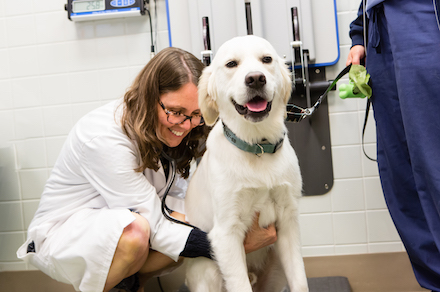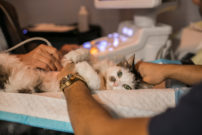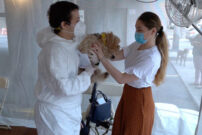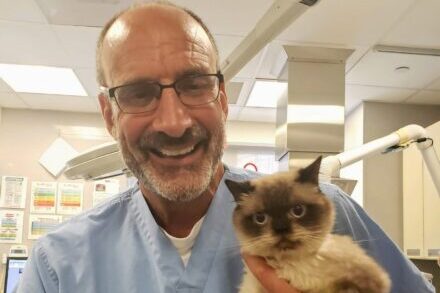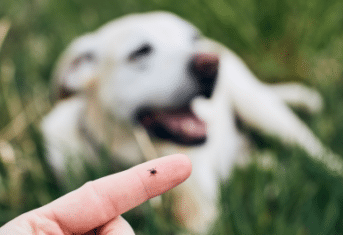70 Pounds of Labrador Hair?

70 Pounds of Labrador Hair?
I just heard a staggering number, and it is not about our national deficit. In one year, your Labrador sheds 70 pounds of hair. Imagine what that number could be if your dog or cat develops a medical condition causing increased hair loss.
Shedding is normal, but there are medical conditions which increase hair loss. Skin infections, parasites and allergies cause itching, which causes scratching and results in hair loss. Ringworm, mange and fleas can affect both the pet and human family members with itchy skin lesions.
Hormone disorders can cause increased hair loss in pets. Called endocrine alopecia in textbook talk, pets with hormone disorders tend to lose hair on the body and retain hair on the face and feet as you can see in the photograph to the right. This dog suffered from an excess of hormone production from the adrenal glands called Cushing’s disease. Imagine how much hair was in this pet’s home. An underproduction of thyroid hormone is another disorder where hair loss increases.
Certain dogs on chemotherapy, such as Poodles, Old English Sheepdogs and Terriers tend to lose a lot of hair. The West Highland White Terrier pictured here has lost all his long feather coat due to cancer treatment, but retained his undercoat.
In addition to seeking veterinary care for your pet with excessive hair loss or bald patches, there are some solutions to the home hair problems. Wearing a T-shirt can help collect the hair of a pet with increased hair loss. The shirt can easily be laundered to remove the hair and prevent its spread around the house. For my chemotherapy patients, I suggest a short haircut before the hair loss starts. If your pet has a favorite chair, I recently saw an attractive chair cover designed with pets in mind.
Frequent brushing until the hair loss subsides is another method of coping with excessive hair loss. Special deshedding tools safely remove hair, and in cats, deshedding will have the added benefit of decreasing hairballs.
So if you notice bald patches on your pet, more hair on the furniture or more scratching than usual, it would be a good idea to visit your veterinarian for a full evaluation.
This blog may also be found in the “Tales from the Pet Clinic” blog from WebMD.
________________________________________________
For over a century, The Animal Medical Center has been a national leader in animal health care, known for its expertise, innovation and success in providing routine, specialty and emergency medical care for companion animals. Thanks in part to the enduring generosity of donors, The AMC is also known for its outstanding teaching, research and compassionate community funds. Please help us to continue these efforts. Send your contribution to: The Animal Medical Center, 510 East 62nd Street, New York, NY 10065. For more information, visit amcny.gbtesting.us. To make an appointment, please call 212.838.7053.





